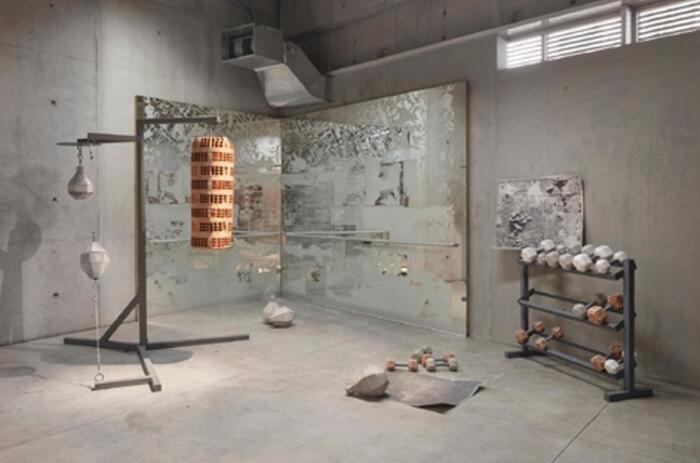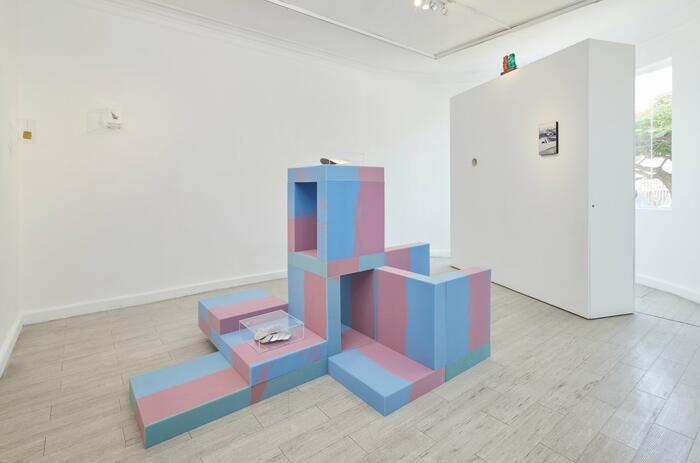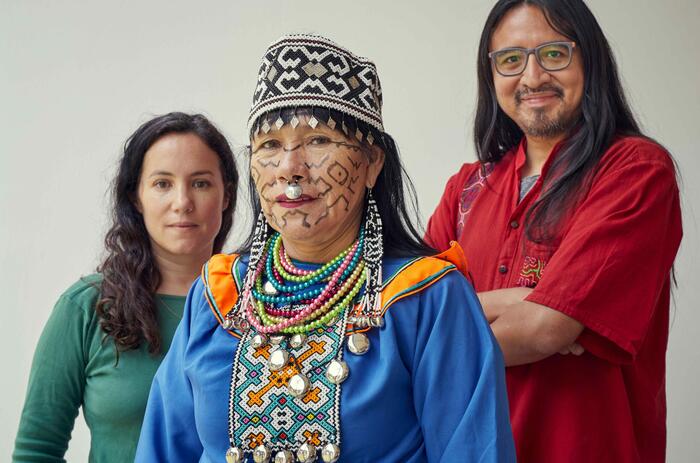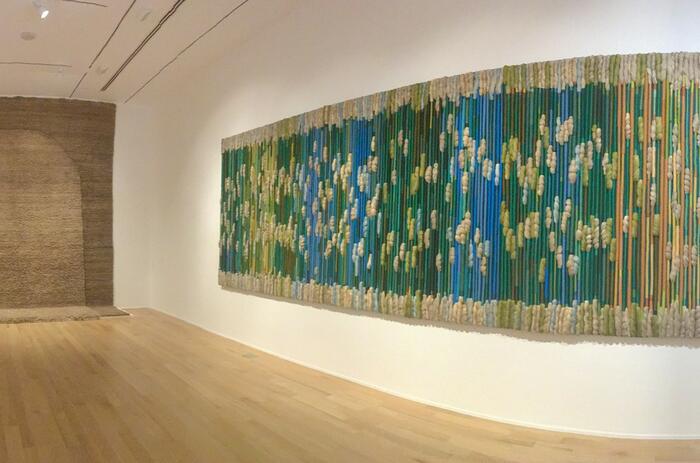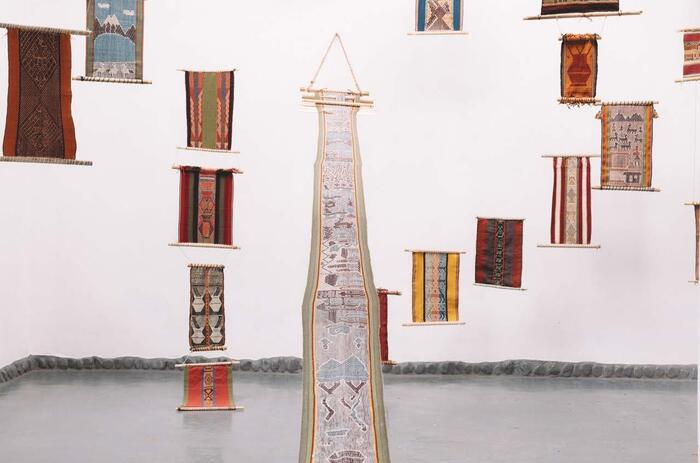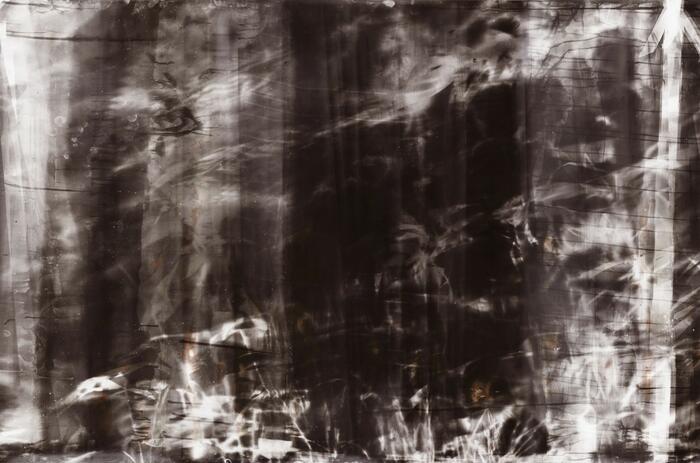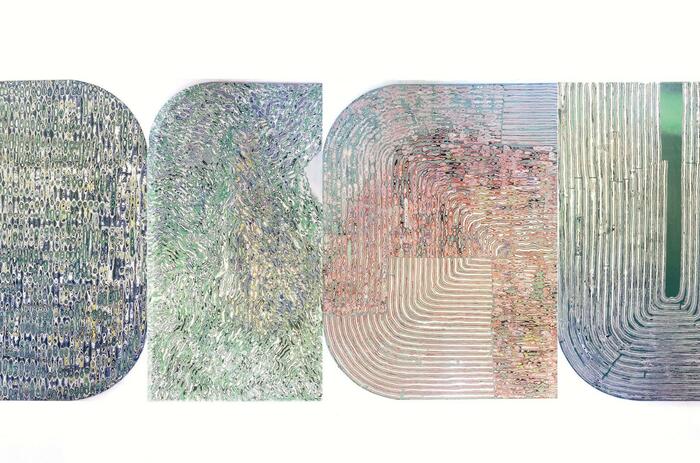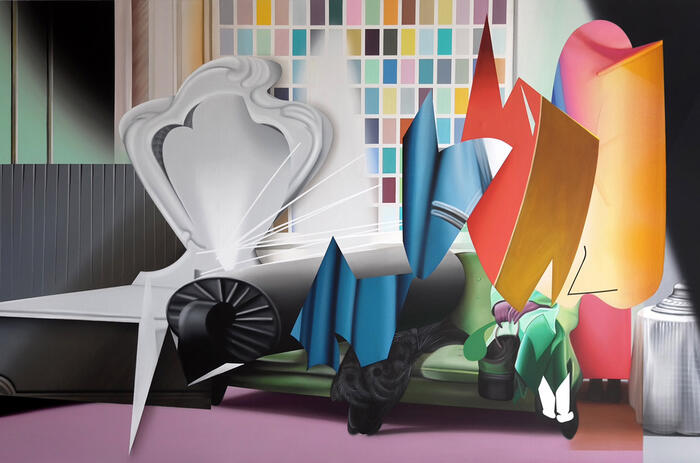SER PALLAY IN GALLERY ICPNA LIMA CENTER
Ser Pallay is a "collaborative textile project'' that bet on an artistic praxis that critically responds to the ambivalent valuation of the extraordinary Andean textile tradition in the art narratives of Peru's cultural history.
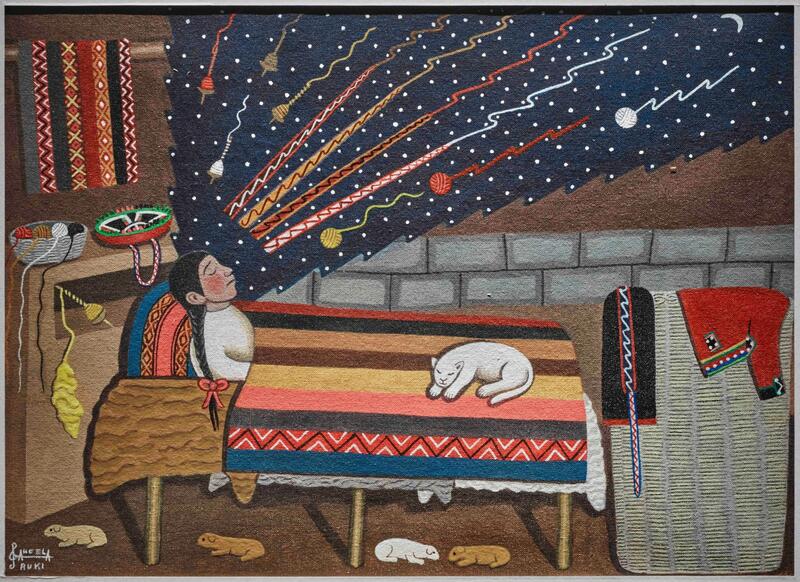
To this end, it puts into practice an ethical/aesthetic exercise that moves in the opposite direction to the reproduction of arbitrary hierarchical relationships between contemporary academic art and traditional Andean textile art.
It is a singular project oriented by the fundamental notion of pallay; a Quechua term that can be translated as design. As well as, by the purpose of creation of kunan pallaykuna: [contemporary Andean textile iconography]. This intention triggers a core question, present in the curatorial text: "Can the Andean pallay, a communitarian and ancestral language, produce a critical testimony about the present?”
The initiative was born from the exchange between curator Florencia Portocarrero (Lima, 1981) and textile artists María José Murillo (Arequipa, 1989) and Verovcha (Lima, 1994). It was developed during the months of October to December 2021, with the fundamental participation of eight "weaving artists of Cusco" (inhabitants of different localities); who were summoned with the support of the Center of Traditional Textiles of Cusco (CTTC), Peru: Alipio Melo (Pitumarca, 1989), Celia Pfoccohuanca (Accha Alta, 1985), Cintia Ylla (Chahuaytire, 1997), Cristina Ylla (Chahuaytire, 1997), Hermelinda Espinoza (Sallac, 2004), Luz Clara Cusihuaman (Chinchero, 2004), Miriam Quispe (Chinchero, 2006) and Norma Ojeda (Patabamba, 1980).
In twelve (semi-attendance) work sessions, the knowledge, imaginaries, materials and techniques of traditional Andean textiles were related to the logics, methods and practices of the so-called "fine arts" of the West. This is thanks to the gathering of artists of different origins, training and cultural backgrounds who have in common vital transcendental relationships with weaving. Who surely also had to nurture the sense of community with their individual differences. This made possible the figure of the Ser Pallay Collective made up of all the participating artists.
In this sense, the exhibition Ser Pallay at the ICPNA Lima Centro Gallery brings together a group of textile pieces produced by this collective. Along with documentary supports and a selection of traditional textiles, as well as materials and tools associated with Andean ancestral practices. Accompanying this diversity of elements, a set of texts of different character, corresponding to the five nuclei in which the project was organized. Open questions in relation to collective creation; references to the Andean cosmovision; premises about the relationship between the past and the present; stories from the oral tradition; among others.
This exhibition can be read as the staging of a participatory artistic action-research with an intercultural perspective. Even the museography, by artist Iosu Aramburu (Lima, 1986), is based on the decisions originally made by the collective for the exhibition, and incorporates evocative elements of the project's environment. "El sueño de la tejedora", a small painting (acrylic on canvas) by Angel Callañaupa opens the tour.
The main piece Telar columna-comunal, 2021; the set of textiles that make up Kunan pallaykuna, 2021; and those of a third, smaller set, are installed in such a way that they visually levitate in the space, in a composition that also refers to textile design patterns.
Telar columna-comunal can be seen as one of the most representative answers to the question of the possibility of producing a testimony of the present from the language of the pallay. It is a four-meter-long piece, made on a backstrap loom, with animal fiber and natural dyeing. Its installation in the space highlights the presence on the floor of the beautiful stone that is used to adjust the tension of the warp thread. The experimental method used in its realization is described by the curator as a sort of "exquisite woven corpse", alluding to the well-known artistic method. It involved the loom traveling through five different local communities, where the artists of the collective live. In this way, each person had to add an element, in dialogue with the one previously captured. In a compositional order that refers to the three layers of the Andean cosmovision. Singular mode of production recorded within the composition in the text: "KUNAN PALLAYKUNA. WE WEAVE THIS WAY EACH ONE OF US IN OUR HOUSES".
-
Kunan pallaykuna. Treinta y uno piezas tejidas en fibra animal y teñido natural. Colectivo Ser Pallay . 2021 // Telar columna-comunal. Fibra animal y teñido natural en telar de cintura Colectivo Ser Pallay. 2021. Fotos de Juan Pablo Murrugarra.
-
Kunan pallaykuna. Treinta y uno piezas tejidas en fibra animal y teñido natural. Colectivo Ser Pallay . 2021 // Telar columna-comunal. Fibra animal y teñido natural en telar de cintura Colectivo Ser Pallay. 2021. Fotos de Juan Pablo Murrugarra.
-
Vistas de la exposición. Cortesía ICPNA. Fotos de Juan Pablo Murrugarra.
-
Vistas de la exposición. Cortesía ICPNA. Fotos de Juan Pablo Murrugarra.
Telar columna-comunal functions as the axis around which the thirty-one textiles of Kunan pallaykuna, 2021 are arranged. They are woven in animal fiber and with natural dyeing, made individually, in small, non-traditional formats. They are also presented as a collective creation, which was guided by the thematic nuclei generated in the group reflections: Pachamama Pampachaway [Forgiveness to Pachamama], Wiqeywanmi kay Pachata ch'aqchuni kusisqa [With my tears of happiness I am watering the earth], Uywakunaq tinkuynin awaynikupi [Meeting of the animals in our weaving], Pacha Kutiy [Return to the earth], Chiqaq chanin awasqa-yku mana hayk'aq tukukuq [Our weaving is strong and valuable, it transcends]. The complementary room texts describe each of the nuclei. The first Pachamama Pampachaway [Forgiveness to Pachamama], provides a sharp look at the pandemic and its relationship to the current ecological emergency:
"The Kunan pallaykuna housed in this nucleus reflect especially on the time of pandemic, the deaths of our loved ones due to covid, the social distancing, the repercussion of human activity on the earth, being increasingly perceptible in the alteration, destruction and impact on nature and its ecosystems (...)".
The exhibition also includes a selection of magnificent lliklla; traditional clothing distinctive of the localities of origin of the families of the weaving artists. Different objects, archival material of the project, elements and materials are carefully organized on museographic devices (built with adobes). Such as a monitor with a video and photographs that show the synergy between the artists. As well as different representative objects: skeins of animal fibers, bone and wooden tools, among others.
On one of the walls of the room there are two sets of simple pieces. AUTHORÍA, 2021: nine digital prints on paper of photographic portraits of each artist member of the collective; with their respective signatures. Pallay exquisito, 2021: ten digital prints of pallays achieved with the aforementioned "exquisite corpse" method. Both series, apparently minor in relation to the central creations, are keys that reiterate the questioning of hierarchies and power relations implicit in the conventional notion of authorship-authority.
The constellations of meaning created by the Ser Pallay Collective demand fairer and more balanced ways of creation and ways of life. As if it were an ethical-aesthetic-ecological testimony, the exhibition achieves a sense that transcends the critical dialogue with the local context by inviting to rethink contemporaneity from pasts that remain alive.
-
Vistas de la exposición. Cortesía ICPNA. Fotos de Juan Pablo Murrugarra.
-
Nieves Mamani Quispe. Llilklla tradicional de Santa Cruz de Sallac de 10 años de edad. Fibra natural y teñido natural. Fotos de Juan Pablo Murrugarra.
-
El sueño de la tejedora. Pintura sobre lienzo. Ángel Callañaupa. 2023. Fotos de Juan Pablo Murrugarra.

